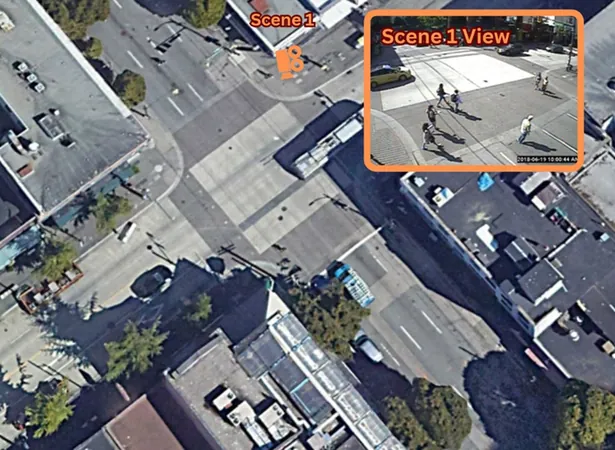
Shocking Findings: Texting While Walking Dramatically Increases Pedestrian Danger, Study Reveals
2024-10-07
Author: Li
Introduction
A groundbreaking new study from the University of British Columbia (UBC) has unveiled alarming statistics regarding the dangers of distracted walking, particularly in busy urban environments. The research indicates that pedestrians who engage in activities like texting or talking on their phones face a significantly higher risk of accidents compared to those who stay focused on their surroundings.
Previous Findings
Past research has hinted at the perils of distracted walking, suggesting that individuals engrossed in digital devices often fail to notice oncoming vehicles or stray from designated crosswalks. Now, UBC's latest study corroborates these concerns, revealing that distracted individuals are not only less aware of their environment but also make fewer adjustments to their movements, culminating in a staggering 45% increase in the severity of vehicle encounters and near-miss events.
Expert Opinions
"The evidence is striking," said Dr. Tarek Sayed, lead researcher and a prominent figure in civil engineering and transportation safety. "Pedestrians who are not distracted demonstrate safer behaviors, such as maintaining safe distances from vehicles, yielding appropriately, and modifying their speed when necessary."
Driver Behavior
Interestingly, the study also observed the behavior of drivers navigating around distracted pedestrians. It appears that drivers tend to slow down as they approach individuals who are looking at their phones or otherwise distracted, recognizing the unpredictable nature of their movements.
Research Methodology
To collect these insights, researchers employed a sophisticated computer vision system and artificial intelligence simulation models, analyzing real-time video traffic data from two bustling intersections in downtown Vancouver. The focus was on categorizing pedestrians based on their attentiveness—those engaged in texting, reading, or conversing on their phones versus their undistracted counterparts.
Implications of the Study
The implications of these findings extend far beyond mere academic interest. They could potentially reshape pedestrian safety initiatives and urban planning strategies. "We can develop infrastructure that addresses the risks of distracted walking," said study co-author Tala Alsharif, a UBC civil engineering graduate student. Suggestions include modifying crosswalk signal timings and introducing audio cues to alert pedestrians when it's safe to cross. There is even the potential for mobile applications that could remind pedestrians to stay alert while traversing sidewalks or roadways.
Future Research
Looking towards the future, the research team is eager to identify high-risk zones where mobile device usage should be discouraged and explore innovative measures such as sensor-based alert systems. These could serve to minimize distractions for pedestrians. Furthermore, raised crosswalks may enhance visibility for drivers, making it easier to spot distraction-prone individuals.
Conclusion
"Integrating our findings into future studies and traffic management will enable us to more accurately evaluate pedestrian risks and formulate effective road safety strategies," emphasized Gabriel Lanzaro, a UBC civil engineering graduate student and co-author of the study. As cities evolve and technology increasingly permeates everyday life, this research is more relevant than ever, raising crucial questions about balancing connectivity with personal safety in an age of distractions.





 Brasil (PT)
Brasil (PT)
 Canada (EN)
Canada (EN)
 Chile (ES)
Chile (ES)
 España (ES)
España (ES)
 France (FR)
France (FR)
 Hong Kong (EN)
Hong Kong (EN)
 Italia (IT)
Italia (IT)
 日本 (JA)
日本 (JA)
 Magyarország (HU)
Magyarország (HU)
 Norge (NO)
Norge (NO)
 Polska (PL)
Polska (PL)
 Schweiz (DE)
Schweiz (DE)
 Singapore (EN)
Singapore (EN)
 Sverige (SV)
Sverige (SV)
 Suomi (FI)
Suomi (FI)
 Türkiye (TR)
Türkiye (TR)